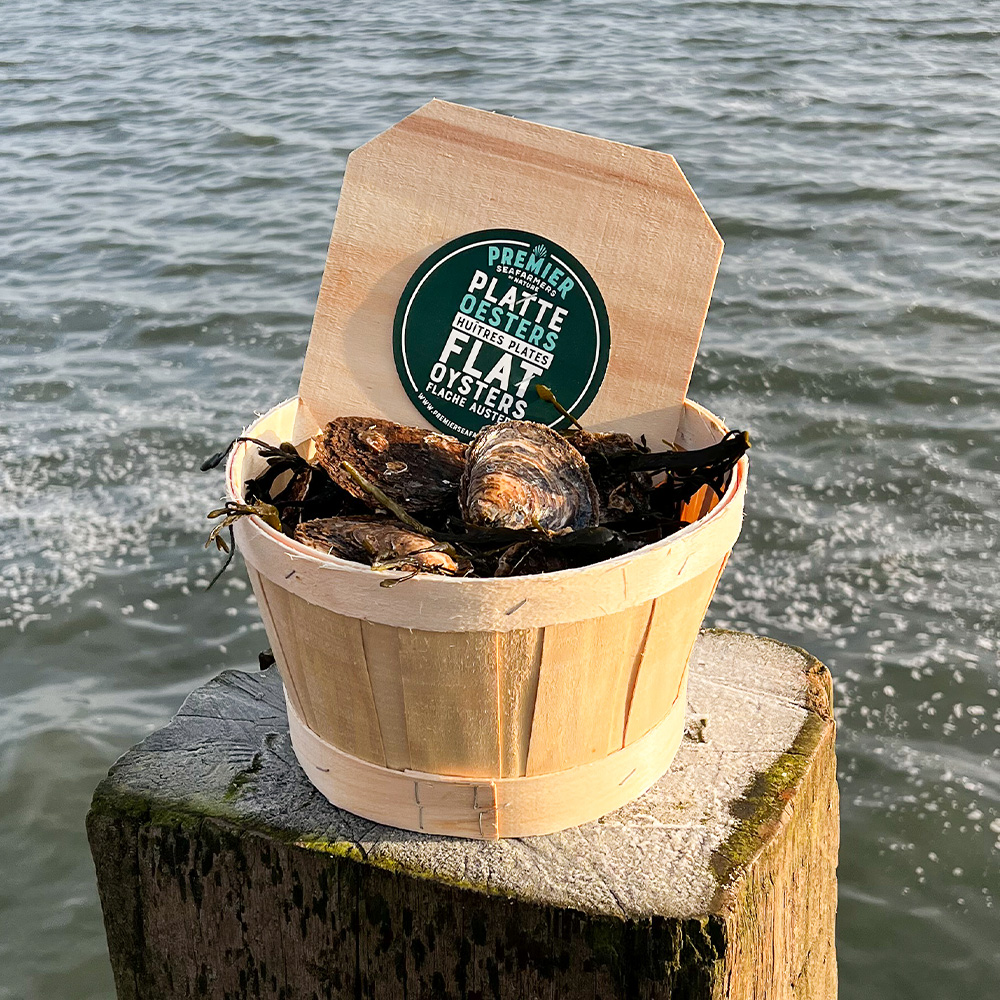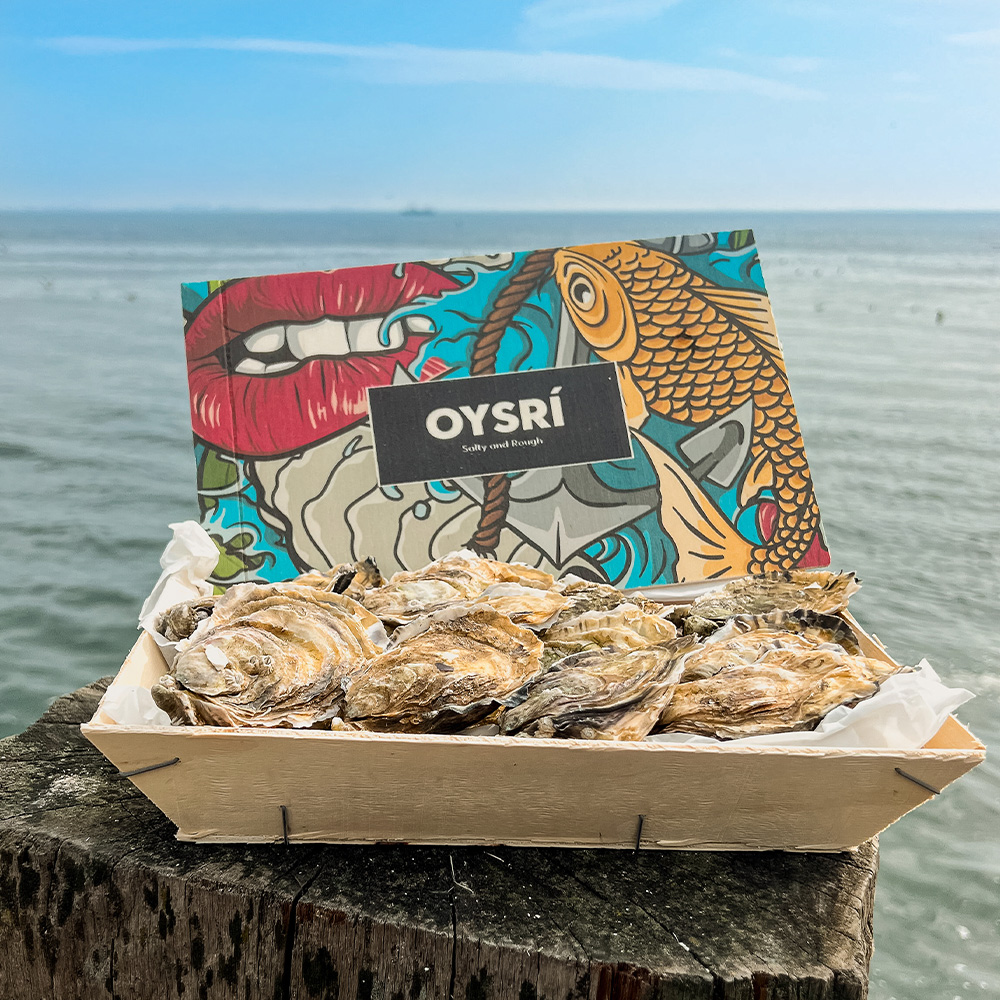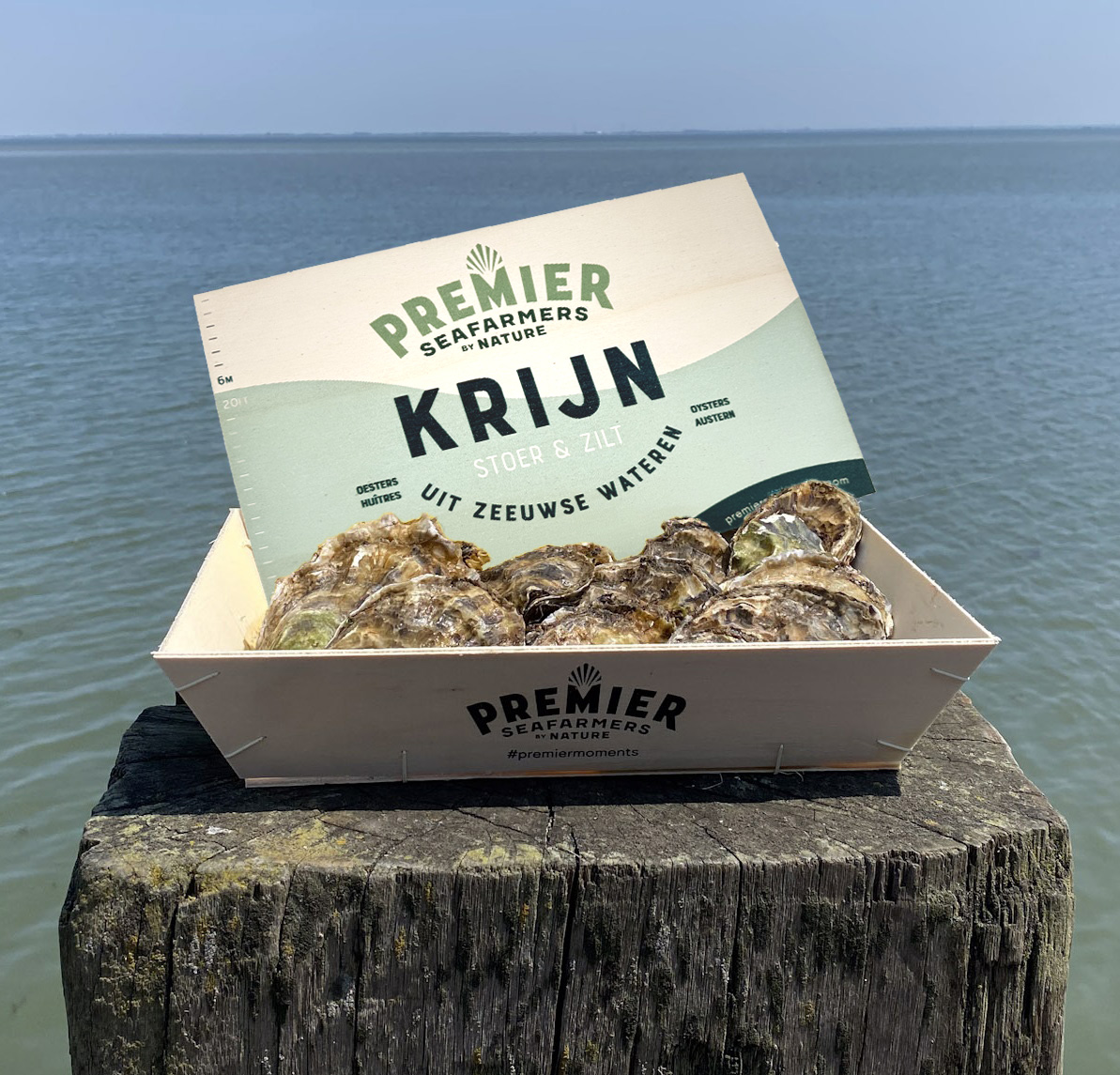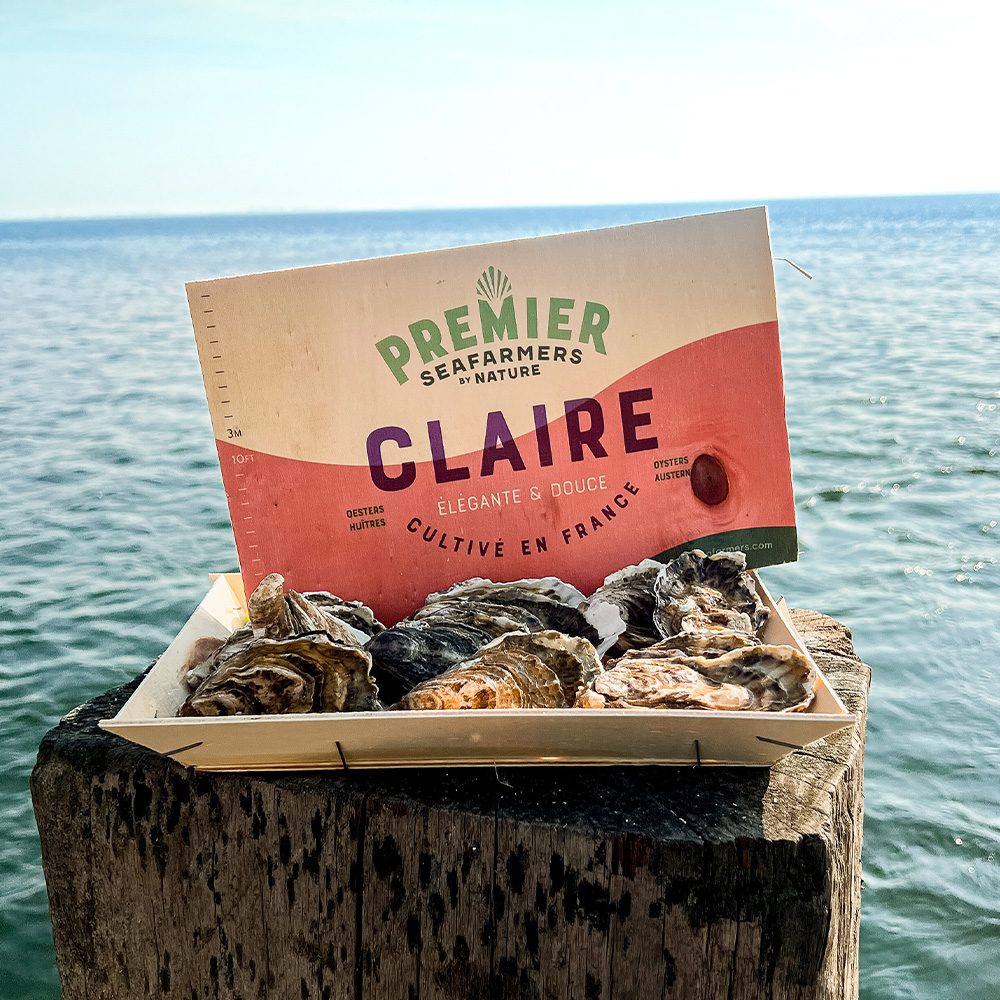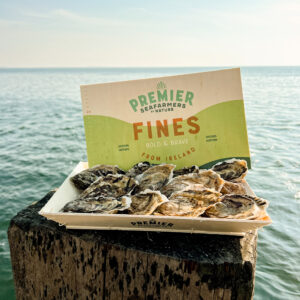Just like with mussels, we have two different farming methods for oysters: bottom culture and table culture.
Traditionally, lime-coated roof tiles were placed on the seabed. Oyster larvae would attach themselves to these tiles and grow into mature oysters. Nowadays, the roof tiles have been replaced by mussel shells.
Another, more modern method of farming involves using oyster seed from hatcheries. These hatcheries simulate optimal conditions for the oysters, and through selection, triploid oysters are cultivated. Triploid oysters are hybrids, do not reproduce, and are therefore available year-round. Oyster farmers, including ourselves, purchase the oyster seed and place it in bags that are set on tables in the sea. With this method, the oysters are much less affected by natural predators and have ideal conditions to grow. Our La Zélandaise and Summer Oysters are cultivated using this technique.
Yerseke is the shellfish hub of Europe, a status it has held since around 1870, when the invention of oyster pits revolutionized the industry. This innovation allowed farmers and traders to keep harvested oysters onshore for extended periods. Initially, this was primarily for the Zeeland flat oyster. However, after the severe frost of 1963 and the oyster virus outbreak in the 1980s, the population of the Zeeland flat oyster nearly vanished, paving the way for the rise of the creuse oyster. Today, the Zeeland flat oyster is thriving again, and Krijn Verwijs offers both types of oysters.
Krijn Verwijs sources oysters from the Oosterschelde, the Grevelingenmeer, Ireland, and France. These oysters come partly from our own cultivation areas and partly from other renowned oyster farmers. Thanks to exclusive partnerships, solid agreements, and high-quality standards, we are assured of delicious oysters all year round.
After harvesting, the oysters are brought to Krijn Verwijs' depuration and purification center. Here, we have indoor, fully controlled oyster pits with purified Oosterschelde water. The constant water quality and conditions provide an optimal environment for the purification of the oysters, where they remain for a minimum of 24 hours.

Our farmer, Hans Nelis, cultivates our La Zélandaise oysters with great care and love. These oysters are grown in special bags on tables. La Zélandaise is a creuse oyster from the same family as Irish or French oysters but is raised in the waters of Zeeland.
The organization Gault&Millau selected our La Zélandaise as Oyster of the Year!
Marc Declerck, CEO of Gault&Millau, explains why this oyster has been awarded the "Selected by Gault&Millau" quality label: “This oyster is a creuse, but due to its creaminess and well-balanced saltiness, it offers a finesse that is more reminiscent of the Zeeland flat oyster than a traditional cupped oyster. A fine, nutty finish completes the experience perfectly.”
Curious about where these oysters grow? We recently visited the site again to take a closer look at this exceptional product.

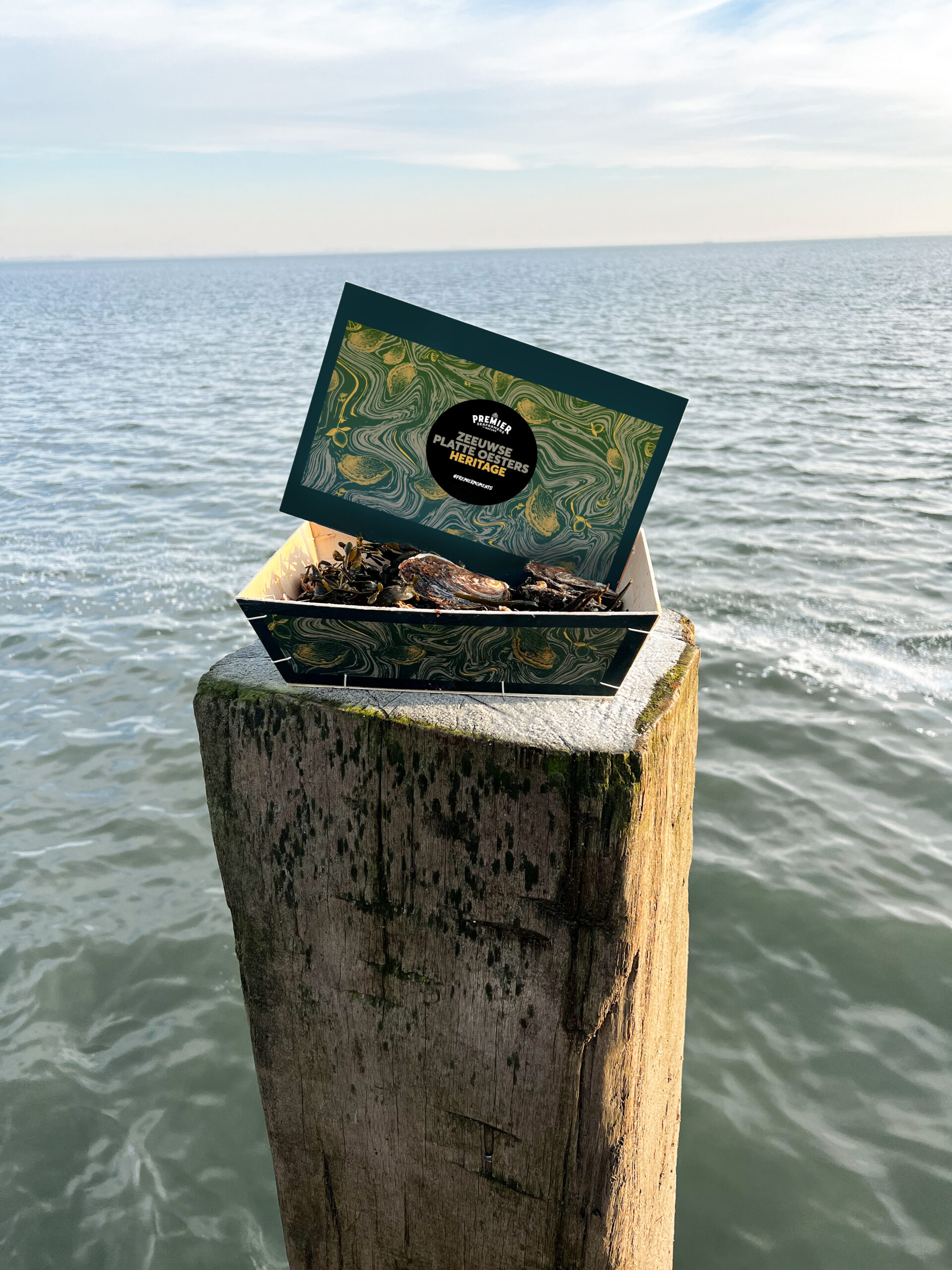
In 1880, our great-great-grandfather Pieter Verwijs began cultivating flat oysters. The flat oyster is a true delicacy and a purely Zeeland product.
Our Heritage oyster is grown on plots that have been in the Verwijs family for 140 years, making this oyster truly part of our heritage.
The Zeeland flat oyster is a slow grower, which makes it quite rare and not available year-round.

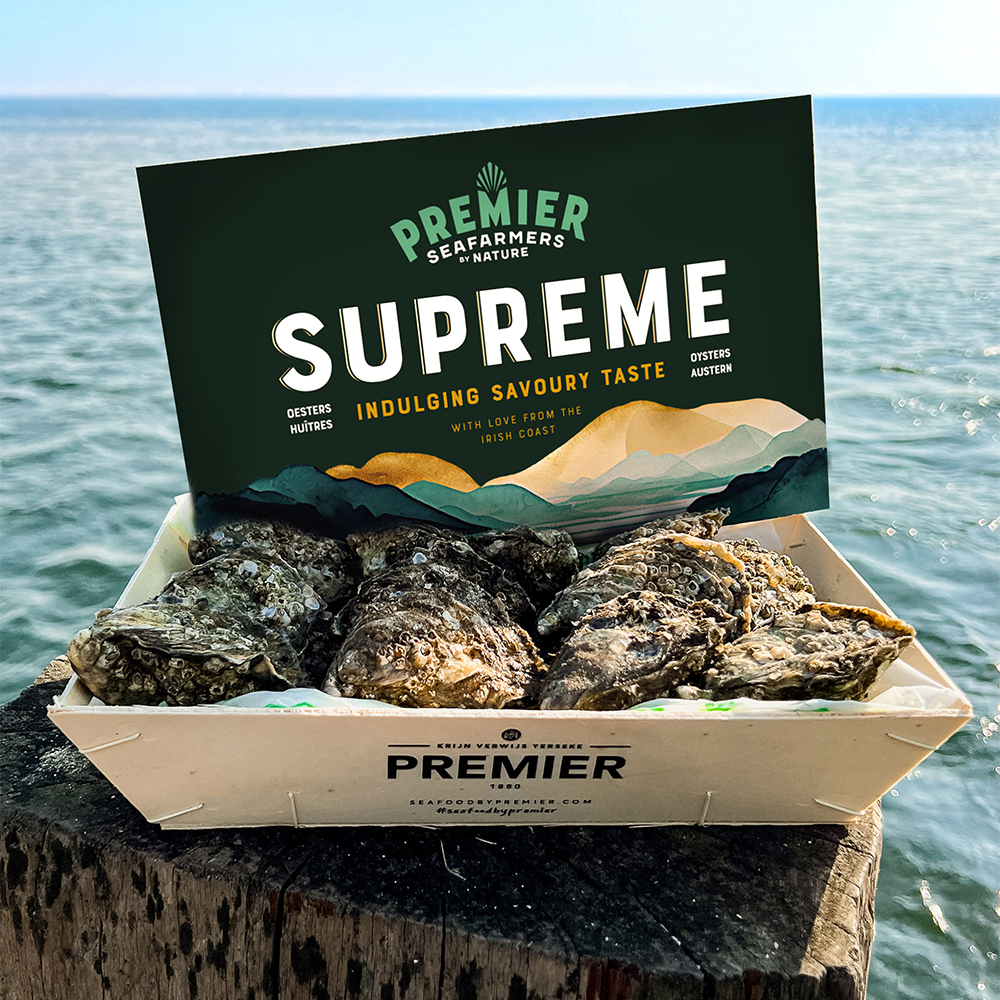
The Irish Supreme is our crown jewel – an oyster that truly lives up to its name.
This exceptional product is cultivated in the stunning bays of southwest Ireland. In this nutrient-rich and untouched environment, the oysters develop a rich and complex flavor profile that is simply unmatched.
Each bite of the Supreme offers a true taste of the sea — a celebration of nature’s finest gifts and a story worth sharing. This luxurious oyster is the centerpiece of our Premier portfolio, carefully selected and graded as a true Supreme oyster.


